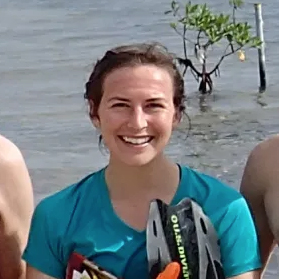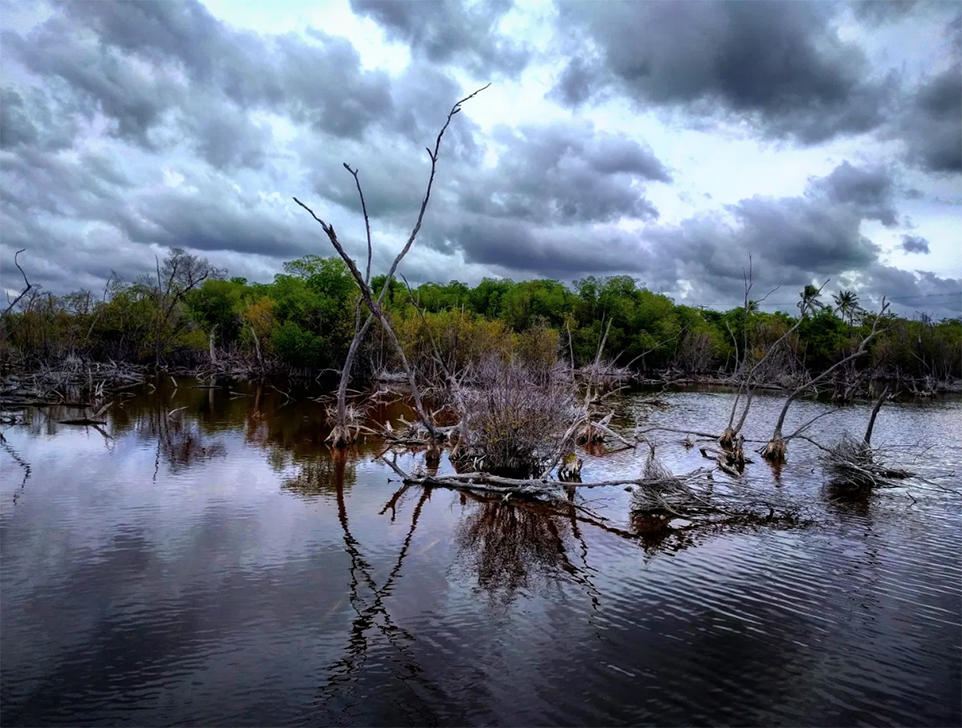.
Plastic, Sea Beans, and Miles of Ocean
By Dianna Bell
 Never would I have imagined going to the Cayman Islands twice in one year. But when an opportunity presented itself to join an Earthwatch expedition in Little Cayman—I jumped at the chance to return to a place where I had vacationed just months ago. But this time, I would be experiencing something very different: a scientific lab of discovery on the expedition Helping Endangered Corals in the Cayman Islands.
Never would I have imagined going to the Cayman Islands twice in one year. But when an opportunity presented itself to join an Earthwatch expedition in Little Cayman—I jumped at the chance to return to a place where I had vacationed just months ago. But this time, I would be experiencing something very different: a scientific lab of discovery on the expedition Helping Endangered Corals in the Cayman Islands.
As I took the final leg of my journey on a 10-seater plane, the pilot (in the role of flight attendant) turned around to tell us to buckle up. I was surprised to find myself feeling a bit nervous. Flying over the varying hues of blue, I didn’t know what to expect from my first Earthwatch expedition. I didn’t know who I would meet. I didn’t know if I had the skills required to partake in the scientific field work.
As we de-boarded the plane on the tiny 10-mile island of Little Cayman, and I was greeted by Central Caribbean Marine Institute (CCMI) staff, I realized that although I still didn’t know what to expect, it would undoubtedly be a special experience. In the days that followed, I got to know my teammates—a former oceanographer, a Shell engineer, a Department of Energy employee, and one of my coworkers from Earthwatch. I snorkeled more than I ever have before, I saw two nurse sharks, and I learned about many different species of coral and why they’re important. I learned about the importance of sea sponges and urchins, and why invasive species such as the lionfish and green iguana can wreak havoc on tiny island ecosystems.
.

.
And most importantly, I learned that I can make a difference, even if on a small scale.
.
Researchers around the world need helping hands to get their work accomplished. Here on Little Cayman, there are many coral reefs to survey, and left to one person, the work will take much too long to accomplish.
As we’ve seen for some time, our planet is on the brink of some serious climate-related changes. Having additional hands in the field helping to collect data can speed the process of scientific discovery and conservation along significantly. Here in Little Cayman, Earthwatch volunteers help to survey large areas of coral to assess the health of the reefs. This in turns feeds into larger datasets that can show trends in the marine ecosystem.

Mangroves on Little Cayman.
So what can we do to steer the ship away from the climate change iceberg?
Sign up for an Earthwatch expedition. Go into the field and support scientists as they study the effects climate change is having on plants, animals, and ecosystems around the world. Or maybe look to your own community to lend a hand. Start with leading a trash cleanup day.
One of the most memorable moments from the trip was helping clean the beach in front of a local restaurant here on Little Cayman. The five of us on the team collected 10 bags of trash, waste that’s coming to the island from all over the world.

Trash that has washed ashore Little Cayman.
Little Cayman is home to 150 to 200 people, depending on the time of year. Yet every day, bags and bags of garbage wash ashore.
.
Seeing the many discarded items on the beach today was a revelation for me. Despite my own eco-friendly nature, I have a carbon footprint, and this has widespread effects—effects I had previously never seen laid before me so clearly.
.
As I picked up the bottle caps, toothbrushes, shoes, contact lens cases, medicine vials, and various forms of plastic, I was reminded of a little factoid CCMI’s Scientific Educational Outreach and Dive Instructor Katie told us on our very first day. We had been gearing up to snorkel, and she bent down and picked up a smooth brown shiny rock-like object. She brought it over to us and informed us that it was a sea bean: the seed of a fruit that drifted out into the ocean, sometimes carried for hundreds of miles. She told us the one in her hand most likely came to the island from Central America.

.
While collecting trash from the shore, I uncovered some of these sea beans. Just like the waters carried the seeds of tropical trees to new lands, so did it bring the discarded objects of humans from miles and miles away.
.
Our actions matter. Whether we intend to or not, we are making a difference. What I was reminded of during my time in Little Cayman was that I have the power to choose whether my actions will help or hurt. We all do.
.
Sign up for the Earthwatch Newsletter
Be the first to know about new expeditions, stories from the field, and exciting Earthwatch news.